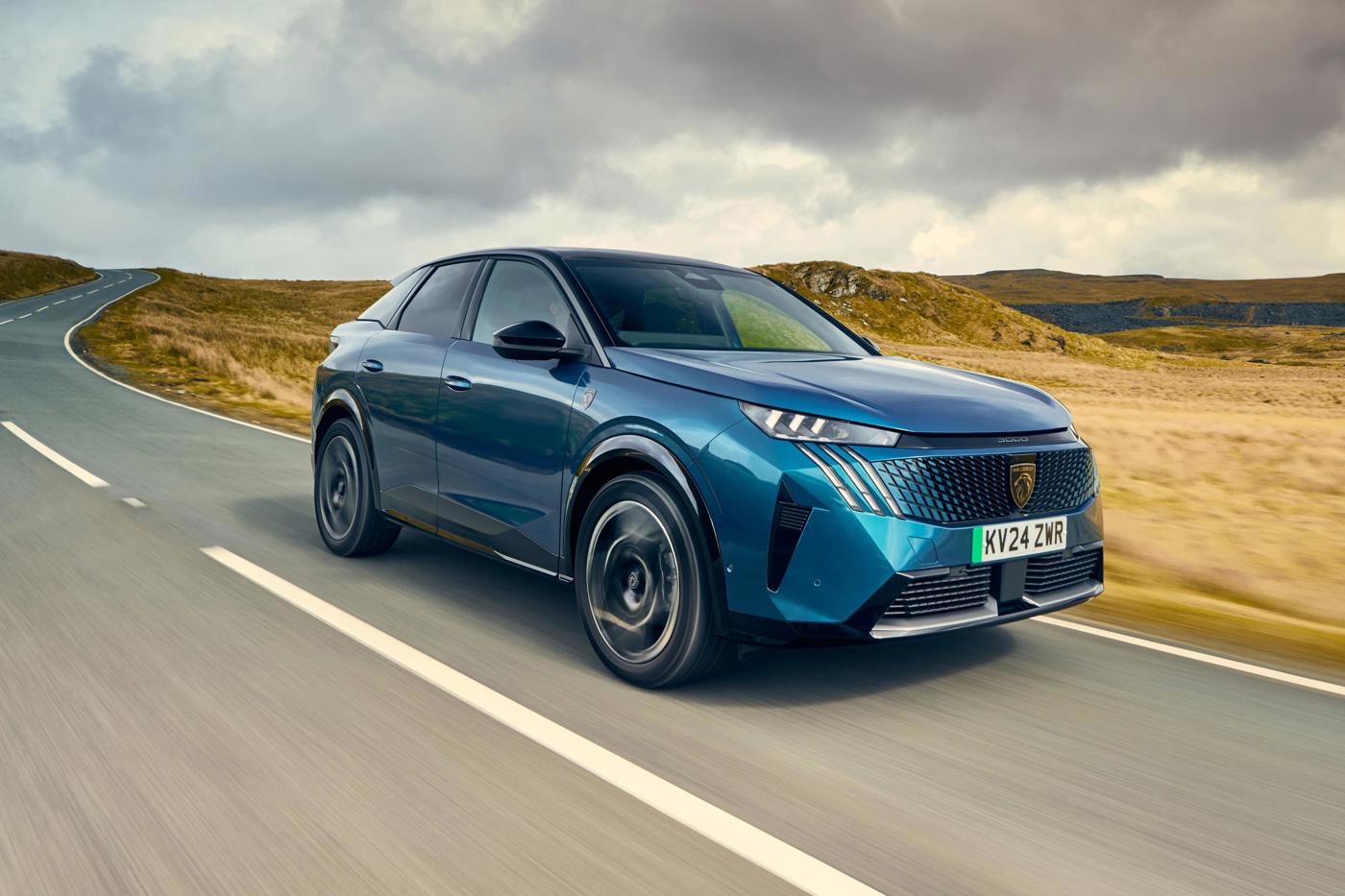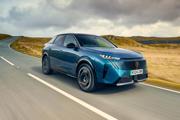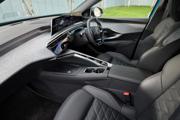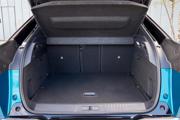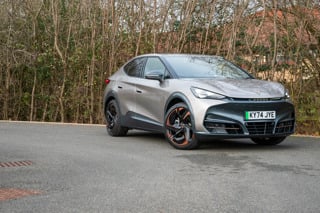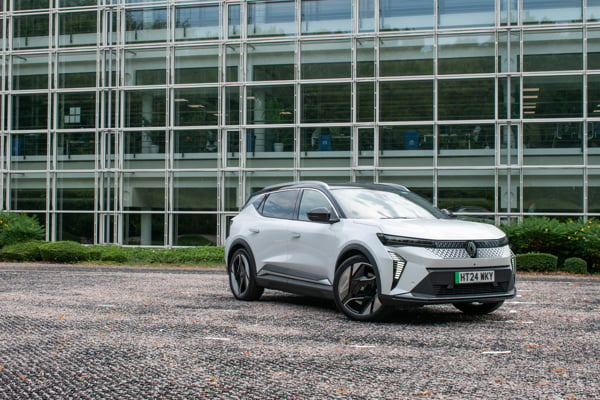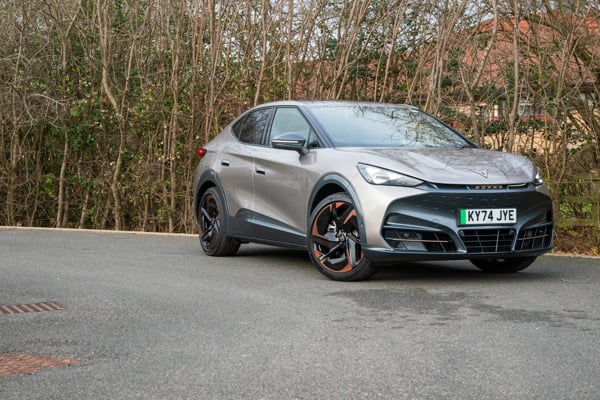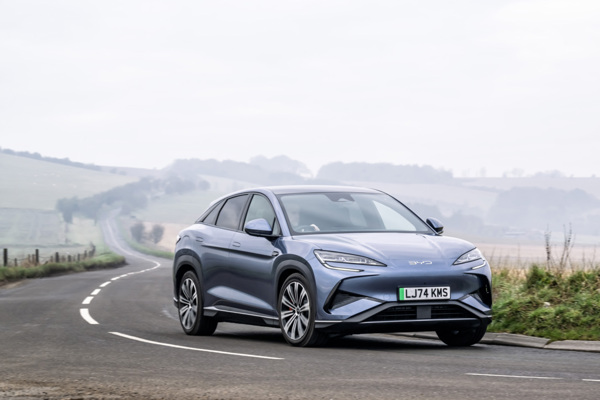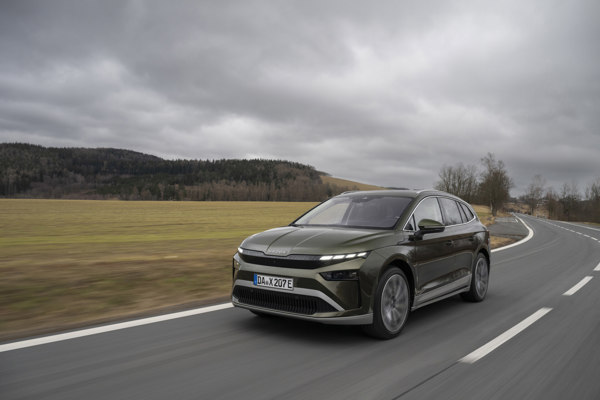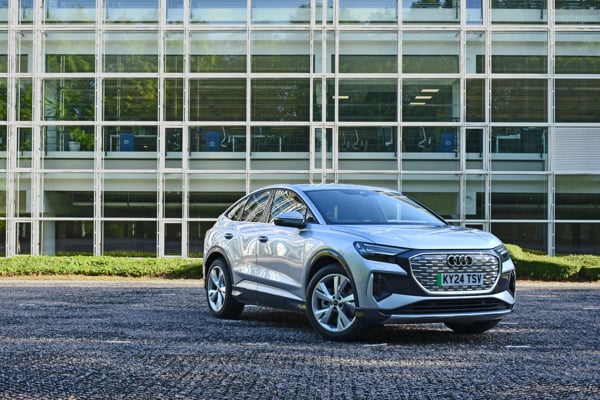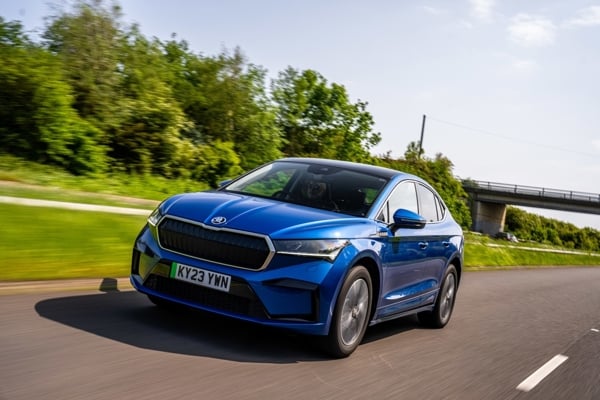Review
The E-3008 represents a major evolution in Peugeot's electric powertrain offering and has impressive refinement and technology, but it falls short of rivals when it comes to ergonomics and efficiency.
Overview
Few cars have undergone such a drastic transformation from generation to generation as Peugeot’s 3008 SUV. The original underwhelmed, with drab styling and mediocre performance, before transforming into a class-leading, dynamic and eye-catching car in generation two.
Now, the third-generation 3008 makes another leap forward. It morphs into a fastback design, with a sleeker roofline and sportier appearance. Under the skin there’s an all-new platform and an electric powertrain. The interior has been given an overhaul, too, improving the car’s premium feel.
The E-3008 is offered alongside the 3008 petrol hybrid and plug-in hybrid models.
Pricing for the E-3008 starts at £45,850. Its rivals include the new Renault Scenic E-Tech, Kia EV6 and more premium models like the Polestar 2 and Volvo EC40. There’s also the Tesla Model Y, which is currently the best-selling EV in the true fleet market.
With a potential range of up to 435 miles, Peugeot says the new E-3008 is more capable than its competition and will travel further with less frequent charging stops.
Comfort and practicality
Transitioning from a boxy SUV to a sleeker fastback was a bold move by Peugeot as there’s undeniably a reduction in overall practicality as a result of its raked rear window.
Measured boot volume remains unchanged when compared to the old 3008, at 520 litres, but that only takes into account the space below the parcel shelf. If you’ve got a big dog or a penchant for collecting flat-pack furniture at the weekend, the new 3008 is not going to cut it.
While the overall design does impact load space, the new 3008 is still spacious for passengers. There’s no reduction in rear headroom, despite the car’s sleeker silhouette and legroom remains intact thanks to clever packaging beneath the floor. The dashboard and centre console do take up quite a lot of space inside, however.
Peugeot’s desire to be a more aspirational brand is apparent from the new 3008’s interior. The modern dashboard incorporates a floating panoramic screen, touch sensitive panels in lieu of physical buttons and a swooping centre console that cocoons the driver.
It feels like a step up for the brand and marks a refreshing departure for Peugeot from some of the commonly used Stellantis group switchgear. There's plenty of higher-grade materials to give a premium feel.
Where the car falls short is ergonomics. For starters, the i-cockpit layout, which places the steering wheel beneath the instrument cluster display, means you either need to drive with the steering wheel between your knees or accept that you'll only ever be able to see the top half of the dials. It doesn't provide a universally acceptable driving position and leaves this tester feeling uncomfortable.
The overall cockpit layout is 'bonkers'. The controls are scattered throughout the cabin without much logic. The engine start button is obscured behind the steering wheel and the volume control is in the centre console, above the handbrake switch, where you'd expect the gear selector to be.
Safety and technology
With only two trim levels available, Peugeot has gone all-in with the spec of the new 3008. The entry-level Allure model is loaded with features, including 19-inch alloy wheels, keyless entry with proximity locking, rear parking sensors, a reversing camera, sat-nav with connected services and interior ambient lighting.
The range topping GT comes with 20-inch wheels, pixel LED headlights, adaptive cruise control, blind spot monitoring, a heated steering wheel and heated front seats, a power tailgate and Alcantara upholstery.
There’s only a couple of options available, making ordering much simpler. Oddly, Peugeot has decided that a Heat Pump isn’t a necessity in the UK – our climate isn't cold enough, apparently – so you’ll need to fork out another £700 to add one.
As a car designed for families, there’s no doubting the 3008’s safety credentials. It’s loaded with the latest assistance systems, including lane keep assist and a speed limit warning.
Euro NCAP has yet to give the new model a score but we’d expect full marks to be achieved, like its predecessor.
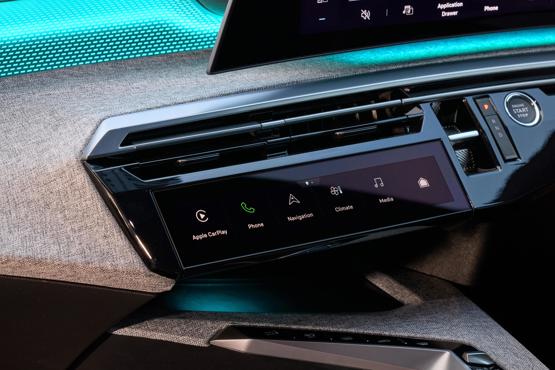
A fresh infotainment system is delivered via a 21-inch panoramic screen. It’s an impressive spectacle with high resolution graphics and a simple operating system. The infotainment portion of the display is touchscreen, although it can be a bit of a stretch to reach the extremities of the screen.
There’s a smaller touch panel below, known as i-toggle. This contains ten customisable tiles, for quick access to whatever functions you desire, be it the heated seat, navigation or a favourite radio station.
Driveability and range
This is the important bit. The new STLA Medium platform, that underpins the 3008, is going to make its way into many new models across the group. As Peugeots tend to have a dynamic edge over their stablemates, we were expecting the 3008 to be pin sharp to drive.
It isn’t. That’s not to say that it’s a poor effort. Peugeot has clearly recognised that the majority of its customers aren’t hammering their crossovers around racetracks, so the chassis and powertrain tuning has been reigned in.
There’s a firm feel to the ride, especially at low speeds where it can become a little harsh. Once the speed increases the 3008 becomes more fluid, ironing out the bumps more gracefully.
The small, oval steering wheel gives a more nimble feel to the handling, with light and quick responses the 3008 will change direction with urgency.
Three versions of E-3008 are available, starting with the standard range car. It uses a 73kWh battery and a single electric motor, giving a range of up to 327 miles (WLTP).
A twin-motor version gives all-wheel drive, upping the power output to 326PS. There’s a tiny drop in range of a few miles, according to the official specs.
For those that want to go further between charges, the Long Range variant packs in a 98kWh battery. Range is boosted to 435 miles but it retains only the single motor for propulsion, outputting 231PS.
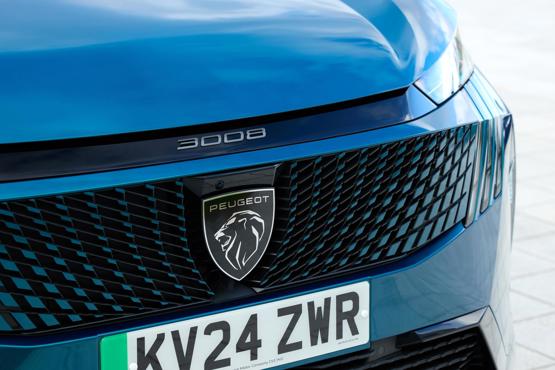
Only the standard range model is available at launch and it's the only version we've driven so far. Peugeot claims an efficiency figure of 4.4mi/kWh but our testing netted 3.3mi/kWh. This suggests a realistic range of around 240 miles could be achieved.
Despite being designed as an EV, the E-3008’s platform also accepts an internal combustion engine in the Hybrid and Plug-in Hybrid variants. Engineers said this is why the single motor car sends power to the front wheels, rather than the rear.
Usually a front-driven EV with more than 200PS would be scrabbling to find traction in wetter conditions, but the E-3008 seems to have no issue putting its power down. That may have something to do with an extremely conservative throttle calibration that reigns the power in quite significantly from the off.
Acceleration from 0-62 takes 8.8 seconds, but the e-3008 is not quick off the mark. It’s a little more potent in the mid-range, but with such a high level of refinement it’s difficult to get any real sensation of speed.
We’re yet to test the more potent model, but anticipate it will be the more driver-focused variant.
Regenerative braking is controlled via a three-step paddle-operated arrangement, rather than Peugeot’s usual ‘B-mode’ button. It makes the system much more useable in day-to-day driving.
Company car tax and running costs
The E-3008 sits in the 2% benefit-in-kind tax band and drivers will pay from £15 per month (20% taxpayer) for the standard range model in Allure trim.
The higher spec GT may have more driver appeal, with a list price of £49,595 it will only cost around £1 more per month in tax.
When it comes to running costs, the E-3008 falls short. Renault's Scenic E-Tech is almost £5,000 cheaper and offers a larger battery with more range. The Scenic E-Tech Techno will cost businesses 36p per mile, over a four-year cycle. The E-3008 Allure (73kWh) will cost 43p per mile.
Charging speeds
3-pin plug: 37.5 hours
7kW wallbox: 11.75 hours
11kW AC: 8 hours
22kW AC (optional): 4 hours
Rapid (160kW max): 36 mins (10%-80%)
Specs
| Manufacturer | Peugeot |
| Model | E-3008 Electric Estate |
| Specification | Peugeot E-3008 Electric Estate 157kW Allure 73kWh 5dr Auto |
| Model Year | 2023.00 |
| Annual VED (Road tax) | £10 |
| BIK List Price | £45,895 |
| Range | 326.00mile(s) |
| CO2 | N/A |
| BIK Percentage | 2% |
| Insurance Group | N/A |
| CC | 1 |
| Fuel Type | Electric |
| Vehicle Type | Medium SUV |
| Luggage capacity (Seats up) | 588litres |
| Doors | 5 |
Running Costs
| P11D | £45,895 |
| Cost per mile | 54.82ppm |
| Residual value | £16,575 |
| Insurance group | N/A |
| Fuel Type | Electric |
| Cost per mile | 206.28ppm |
| Fuel | 2.43ppm |
| Depreciation | 202.75ppm |
| Service maintenance and repair | 1.10ppm |
Rivals
Info at a glance
-
P11D Price
£45,895
-
MPG
N/A (WLTP) -
CO2 Emissions
N/A -
BIK %
2% -
Running cost
3 Year 60k : £16,575 4 Year 80k : £13,200 -
Fuel Type
Electric -
Range
326.00mile(s)



